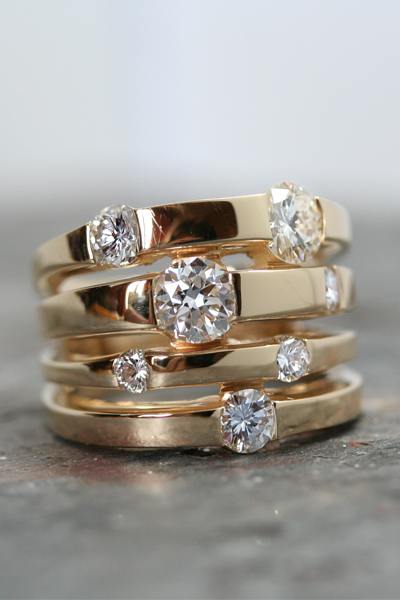How to Choose Your Diamond
The 4 C’s of Diamond Quality
The globally accepted method for assessing the quality of any diamond is known as the 4 C’s of diamond quality. Understanding the 4 C’s will help you make an informed choice when selecting your own diamond.
Diamond weight is described in carats. Diamond weight is measured to the nearest hundredth of a carat, which is also called a point. 100 points equals (1.00) carat. 50 points equals (.50) carats, and 25 points equals (.25) carats.
Color
A diamond’s color grade is based on the absence of body color. A diamond receiving a higher color grade will have very little body color and is visually whiter. The standard color-grading system begins with the letter “D,” and continues with increasing presence of color to the letter “Z.”
Clarity
Natural diamonds are formed thousands of feet below the earth’s surface by pressure, heat and time. This extreme pressure and heat result in what are referred to as natural internal inclusions or external blemishes. These inclusions or blemishes are unique to every stone, like a “birthmark” or “fingerprint.” The clarity of a diamond is determined by the number, size, nature and position of these inclusions or blemishes.
Cut
A diamond’s cut is critical to the stone’s final beauty and value. Cut grade refers to the mathematical proportioning of the stone, and the critical angles of the facets. Refraction gives the diamond sparkle, and the better the cut, the better the light is refracted. A diamond’s cut is rated as Excellent, Very Good, Good, Fair or Poor.
A diamond can be cut in a variety of shapes. Regardless of the shape you choose, a well-proportioned diamond will have optimal sparkle.

